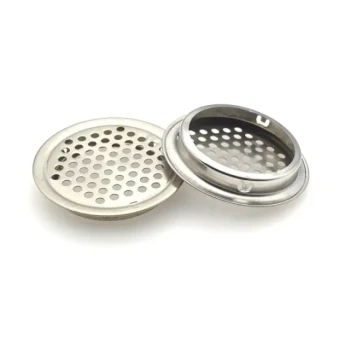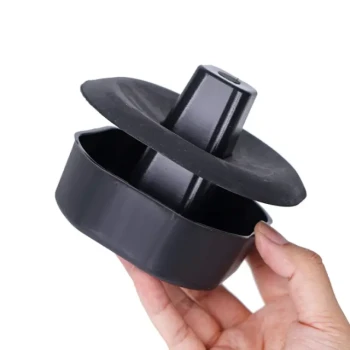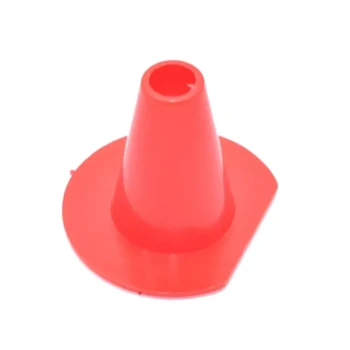The fundamental key to winter beekeeping success is not merely sealing the hive against the cold, but actively managing the hive's internal atmosphere. Success is achieved through a strategic balance of insulation to retain heat and ventilation to expel deadly moisture. This approach ensures the colony remains both warm and, more importantly, dry.
Your primary goal for winter is not to heat the entire hive box, but to help the bees maintain the temperature of their cluster while providing an escape route for the moisture they produce. A cold, dry hive is survivable; a damp, cold hive is lethal.
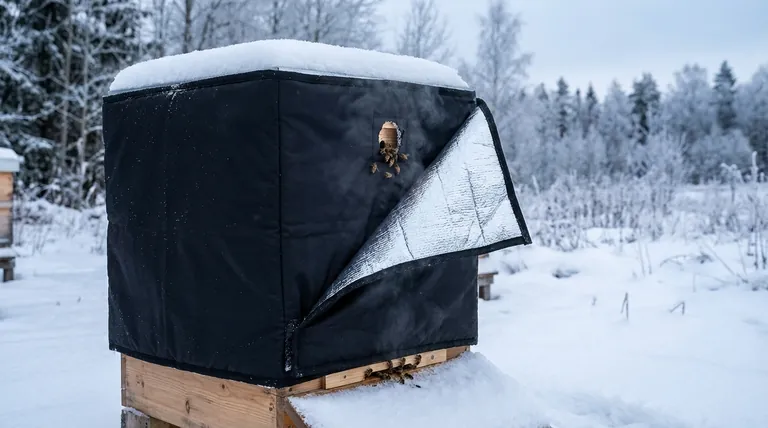
The Core Challenge: Managing Heat and Moisture
To winter a hive successfully, you must understand the two environmental forces at play inside the box: the heat the bees generate and the moisture they release.
How Bees Generate Heat: The Winter Cluster
Bees do not heat the entire hive cavity. Instead, they form a tight winter cluster around their queen, shivering their flight muscles to generate radiant heat.
The outer layer of bees acts as a living insulation shell, while the inner bees tend to the queen and rotate to the outside as they cool. This remarkable system allows the cluster's core to stay at a stable temperature even when it's freezing outside.
The Real Enemy: Condensation
As bees consume honey to fuel their cluster, they release not just heat but also a significant amount of warm, moist air through respiration.
This warm, water-laden air rises. When it hits a cold surface—typically the underside of the inner cover—it condenses into water droplets. This cold "rain" falling back onto the cluster is a primary cause of winter colony loss, as it chills and kills the bees far more effectively than ambient cold air.
The Pillars of Winter Hive Management
Your winter strategy should be built on three core principles designed to help the bees manage their own environment.
Pillar 1: Strategic Insulation
The purpose of insulation is not to heat the hive but to help the bees conserve the energy they are already producing. A well-insulated hive allows the cluster to use less honey to stay warm.
Crucially, insulation should be focused on the top of the hive. A piece of rigid foam board placed directly on the inner cover (and under the telescoping outer cover) is highly effective. This keeps the inner cover warmer, raising the point of condensation away from the center of the hive.
Pillar 2: Deliberate Ventilation
Ventilation is the escape route for the moist air. Without it, you are creating a sealed, high-humidity death trap.
The most effective method is a small upper entrance. This can be a 1-inch hole drilled in the top box or a small shim placed under the inner cover. This simple opening allows the warm, moist air to exhaust before it has a chance to condense and fall back on the bees.
Pillar 3: Ensuring Adequate Food Stores
Honey is the fuel for the winter cluster. Without sufficient honey, the bees cannot generate the heat needed to survive, no matter how well-insulated or ventilated the hive is.
Before winter sets in, ensure the hive is heavy with honey. A deep hive body dedicated to winter stores is standard practice. If stores are light, you must provide emergency winter feed like fondant or hard sugar candy.
Understanding the Trade-offs
Successful wintering is a balancing act. Understanding the potential pitfalls of each action is critical for making the right adjustments.
Insulation vs. Ventilation: The Critical Balance
Too much insulation without adequate ventilation will trap moisture, creating the exact damp conditions you want to avoid. Conversely, too much ventilation can create drafts, robbing the cluster of heat and forcing the bees to burn through their honey stores at an accelerated rate.
Your goal is a slow, passive exchange of air, not a draft.
The Risk of a "Warm Attic"
Properly insulating the top of the hive creates a "warm attic" effect. This is desirable. It keeps the ceiling of the hive warmer than the side walls.
As a result, any condensation that does form will tend to occur on the cooler side walls, where it can run down and exit the hive without dripping on the bees.
The Danger of a "Sealed Box"
The most common mistake for new beekeepers is to seal the hive up tight in an attempt to keep it warm. This completely ignores the problem of moisture.
A sealed hive guarantees that condensation will form on the coldest surface—the inner cover directly above the bees—creating the lethal "rain" that is a leading cause of colony death.
A Practical Winter Strategy
Your specific approach should be adapted to your local climate and conditions, but the principles remain the same.
- If your primary focus is surviving a very cold, dry climate: Prioritize heavy top insulation to help the bees conserve energy, combined with a small upper entrance to vent moisture.
- If your primary focus is surviving a milder, damp climate: Emphasize robust ventilation to combat high ambient humidity, paired with moderate top insulation.
- If you are a new beekeeper and unsure: Start by adding a 2-inch rigid foam board on top of your inner cover and creating a small upper entrance. This single action addresses both heat retention and moisture control.
By mastering the interplay of heat and moisture, you empower your colony to not just survive the winter, but to emerge strong and ready for a productive spring.
Summary Table:
| Key Pillar | Core Function | Actionable Tip |
|---|---|---|
| Strategic Insulation | Conserves bee-generated heat, reduces honey consumption. | Add rigid foam board on top of the inner cover. |
| Deliberate Ventilation | Exhausts deadly moisture from bee respiration. | Create a small upper entrance (e.g., 1-inch hole). |
| Adequate Food Stores | Fuels the winter cluster for heat generation. | Ensure a deep hive body is full of honey or fondant. |
Equip Your Apiary for Winter Success with HONESTBEE
Mastering the balance of heat and moisture is the foundation of winter beekeeping success. Ensure your commercial apiary or distribution business is equipped with the right supplies to implement these strategies effectively. HONESTBEE supplies high-quality, durable beekeeping supplies and equipment—like insulated covers, ventilation shims, and winter feeding solutions—through our wholesale-focused operations.
Let us help you build resilient colonies that emerge strong in the spring. Contact HONESTBEE today to discuss your wholesale needs and secure the right equipment for the season ahead.
Visual Guide
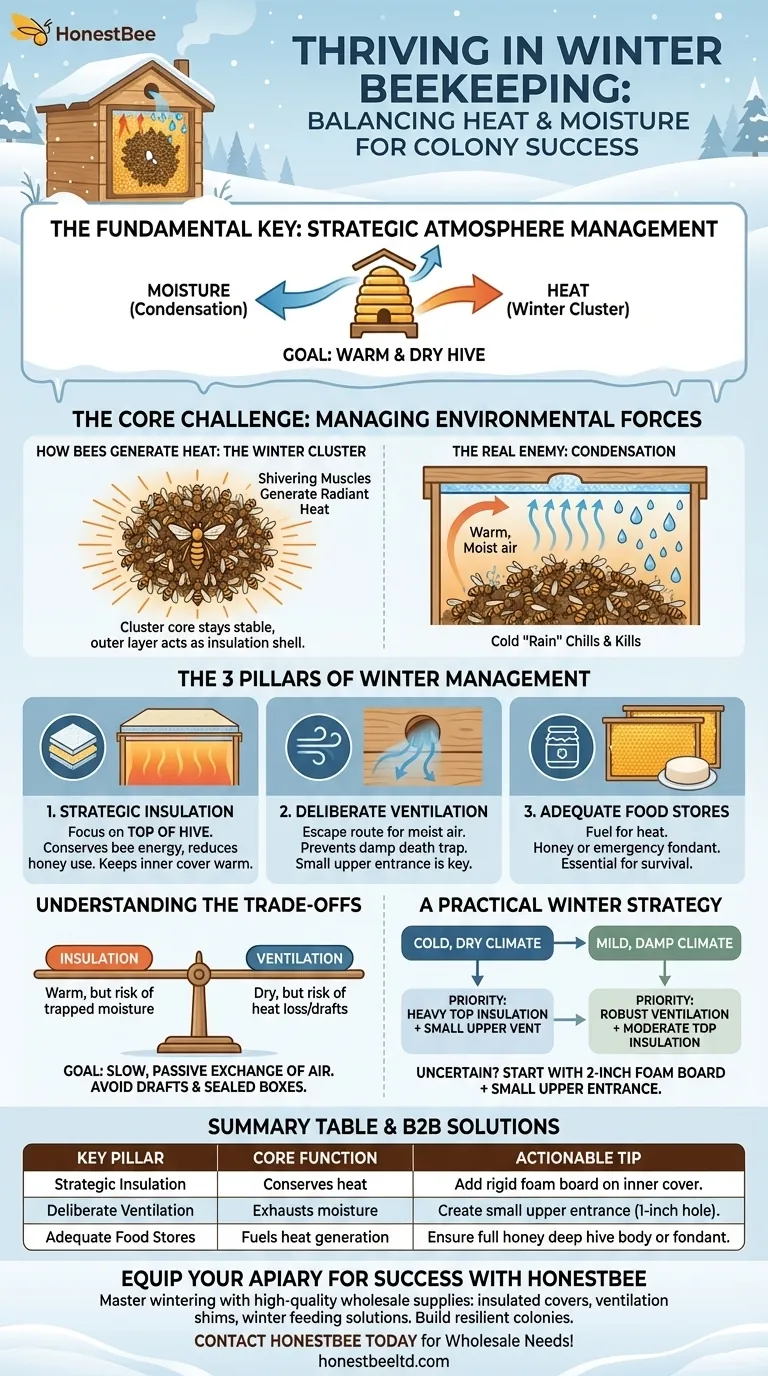
Related Products
- Professional Insulated Winter Hive Wrap for Beekeeping
- Inner Beehive Cover for Beekeeping Bee Hive Inner Cover
- Stainless Steel Round Beehive Air Vents for Ventilation
- Telescopic Beehive Outer Cover Lid Roof with Galvanised Sheeting for Langstroth Hive and Beehive Outer Cover
- Professional Hive Top Bee Feeder for Beekeeping
People Also Ask
- Why is it important to insulate beehives during winter? Boost Your Colony's Survival Rate
- What are the benefits of insulated beehives in cold weather? Boost Winter Survival & Spring Productivity
- What are the durability features of Bee Blankets? Built to Last in Demanding Apiary Conditions
- What are the steps to properly wrap a beehive for winter? Ensure Your Colony Survives the Cold
- Why is insulation important for hives during winter? Ensure Your Bees Survive and Thrive


